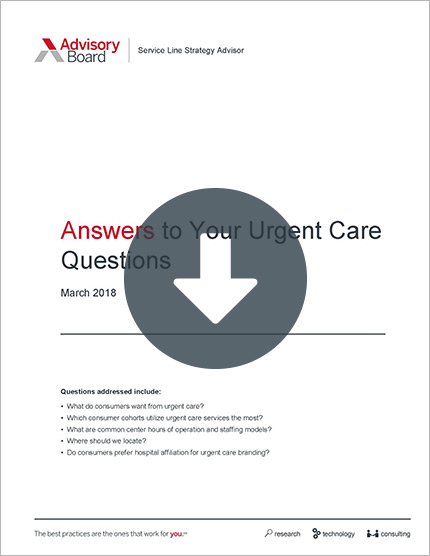Auto logout in seconds.
Continue LogoutAs urgent care centers become a popular alternative to the ED, Yelp reviews can offer insight into what EDs lack in comparison—and where they have a leg up, according to a new study published in the Annals of Emergency Medicine.
Cheat sheet: Your guide to responding to online reviews
Patients increasingly opt for urgent care
For the study, researchers from the Perelman School of Medicine at the University of Pennsylvania looked at crowdsourced reviews to better understand why patients are flocking to urgent care centers. According to Penn Medicine, visits to urgent care centers increased by more than 1,700% between 2007 and 2016.
"Today's world is very digital," said Anish Agarwal, an ED physician at Penn Medicine and a lead author of the study. "As an emergency department physician, patients often tell me that the internet is the first place they go for information about medical conditions and to research providers," he said.
The researchers analyzed more than 100,000 Yelp reviews for more than 1,500 EDs and 5,600 urgent care centers to determine what patients considered to be the pros and cons of receiving acute care in one setting versus the other.
Where urgent care centers thrive—and flounder
The reviews tended to be either very low (one-star) or very high (five stars), according to the study. The researchers found that EDs had a higher percentage of low reviews than urgent care centers. Forty-seven percent of ED reviews were one-star compared with 30% of urgent care center reviews.
When EDs received five stars, patients usually commented favorably on bedside manner, access to care on weekends and evenings, and treatment of family. Urgent care centers received high reviews for different factors, including positive recommendations from someone the patient knows or the ease of prescription refills.
EDs received their worst reviews when patients were dissatisfied with the speed of care. Urgent care centers, on the other hand, received one-star reviews when patients had bad experiences with reception or lacked confidence in the care.
Both facility types received five-star reviews for cleanliness, pediatric care, and professionalism as well as similar one-star reviews for excessive wait times, billing, and pain after care.
How EDs can use crowd-sourced reviews to their advantage
The study authors said that the online reviews could fill knowledge gaps about patient experience for health care providers. "Understanding drivers for high and low online ratings and what patients value in their ED and urgent care center experiences offers insights for health systems and providers to improve acute care delivery," the study authors wrote.
Separately, Raina Merchant, senior author of the study and director of the Penn Medicine Center for Digital Health, said as interest in urgent care centers continues to expand, the crowdsourced reviews can provide EDs with a "rapid way of taking the pulse of how this acute care market is emerging and what consumers look for in these settings." She added, "These platforms can also help us identify new focus areas, in an effort to provide better, more efficient care to patients based on their expressed needs."
In addition, Kevin Mahoney, EVP and chief administrative officer of the University of Pennsylvania Health System, said providers shouldn't expect the positive or negative reviews to lose their value to patients anytime soon. "We are seeing more and more that patients are sharing their experiences online, and they're looking to social media platforms and online communities to help inform their decision-making," Mahoney said (Fottrell, MarketWatch, 11/12; Penn Medicine release, 11/9).
Your guide to responding to online reviews
Responding to online reviews can be tricky—use this cheat sheet to learn best practices for strategically responding in a HIPAA-compliant, patient-friendly manner.
Don't miss out on the latest Advisory Board insights
Create your free account to access 1 resource, including the latest research and webinars.
Want access without creating an account?
You have 1 free members-only resource remaining this month.
1 free members-only resources remaining
1 free members-only resources remaining
You've reached your limit of free insights
Become a member to access all of Advisory Board's resources, events, and experts
Never miss out on the latest innovative health care content tailored to you.
Benefits include:
You've reached your limit of free insights
Become a member to access all of Advisory Board's resources, events, and experts
Never miss out on the latest innovative health care content tailored to you.
Benefits include:
This content is available through your Curated Research partnership with Advisory Board. Click on ‘view this resource’ to read the full piece
Email ask@advisory.com to learn more
Click on ‘Become a Member’ to learn about the benefits of a Full-Access partnership with Advisory Board
Never miss out on the latest innovative health care content tailored to you.
Benefits Include:
This is for members only. Learn more.
Click on ‘Become a Member’ to learn about the benefits of a Full-Access partnership with Advisory Board
Never miss out on the latest innovative health care content tailored to you.

